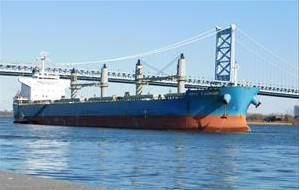The purpose of this study is to give an update on the functioning of freight markets and its impact on the sugar market. The freight market has gone through various changes in recent decades, which can be broadly categorised into two sections: changes in the price discovery mechanism for freight costs and changes in the regulation and structure of the freight market. Meanwhile, sugar remains a truly global commodity, with consumption spread across all countries while there is production, from beet or cane, in 109 countries. A total of 95 countries achieved an export volume in the last year.

These sugar exports are realised via road, rail or sea freight, with the latter representing the vast majority of international flows. Sea freight has been low-cost in recent decades, due to excess capacity. This has resulted in charterers taking a reactive approach to concluding freight contracts while freight pricing products on offer were not aligned with actual voyages. This study reviews some recent changes in this area.
Structural change in the freight market, in terms of vessel building, fuel compliance and pricing mechanisms, could see this interaction between sugar trade and freight markets change in the coming decade. Equally, the freight market could drive change in the sugar trade, with buyers electing to source from regional producers. This could lead to a regionalisation of trade and further changes in the cash-market structure.
Our two previous papers on freight – MECAS (05)18 and MECAS (98)11 picked out three conclusions:
- freight rates are unrelated to sugar prices
- geographical freight advantages are reflected in regional premia
- the majority of sugar exports come from a handful of countries
The papers also note the small share of sugar trade in global freight volumes and a general transition towards larger vessels in the bulk sector.
These conclusions underpin this paper, which focuses on more recent changes. The freight framework receives a comprehensive review covering freight pricing, structural changes in freight, sugar’s response and thoughts around the use of container freight.
Contents:
Introduction
1 Freight Pricing
Baltic exchange indices
Forward freight agreements
Voyage pricing models
Underlying cost structure
Price dynamics
2 Structural Change
IMO rules on maritime fuel
Changes in the fleet
Improvements in ship design
Changes in vessel ownership structures
3 Sugar market and freight
Ahead of the voyage
The voyage / the tradehouse at work
At destination
Overlaying structural change on sugar logistics
4 Container freight
Container logistics
Containerised shipments
Conclusion